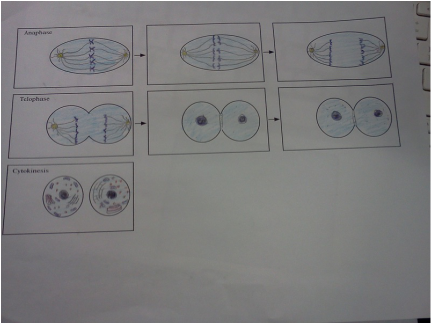

In cells without nuclei ( prokaryotes, i.e., bacteria and archaea), the cell cycle is divided into the B, C, and D periods.

To ensure the proper replication of cellular components and division, there are control mechanisms known as cell cycle checkpoints after each of the key steps of the cycle that determine if the cell can progress to the next phase. During the mitotic phase, the replicated chromosomes, organelles, and cytoplasm separate into two new daughter cells. During interphase, the cell grows, accumulating nutrients needed for mitosis, and replicates its DNA and some of its organelles. In cells with nuclei ( eukaryotes, i.e., animal, plant, fungal, and protist cells), the cell cycle is divided into two main stages: interphase and the mitotic (M) phase (including mitosis and cytokinesis). These events include the duplication of its DNA ( DNA replication) and some of its organelles, and subsequently the partitioning of its cytoplasm, chromosomes and other components into two daughter cells in a process called cell division. The cell cycle, or cell-division cycle, is the series of events that take place in a cell that causes it to divide into two daughter cells.


 0 kommentar(er)
0 kommentar(er)
